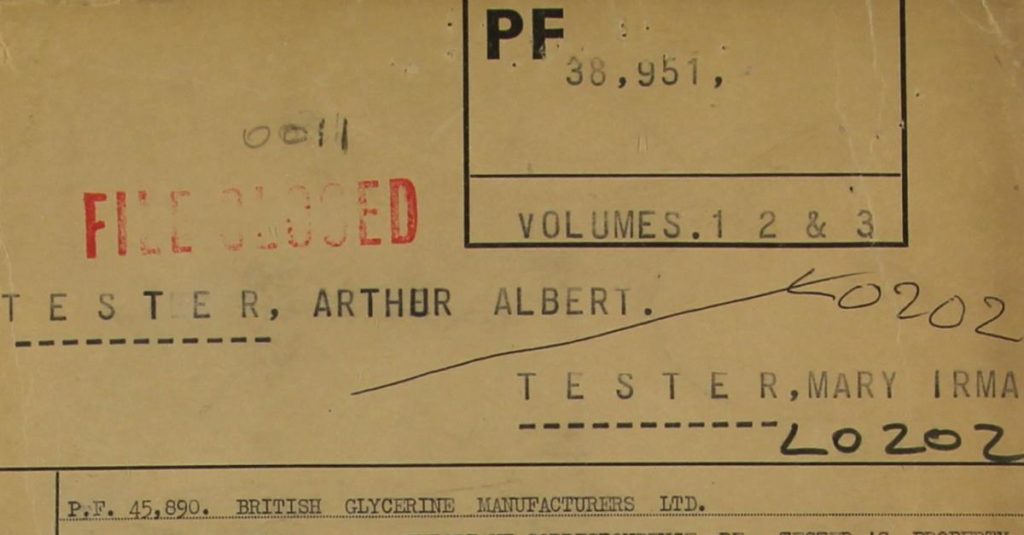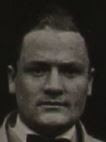
As noted in earlier blogs, I came across Tester’s name while researching the individuals associated with the black market passport business in Berlin in the late 1930s. Tester’s name came up as an associate of Josef Emil Roos and piqued my interest. A British banker who had infiltrated the British Secret Service? That sounded fascinating. When the National Archives at Kew offered all of their digitized files for free… I seized the opportunity to download Tester’s files. There is a fair bit of information about Tester online, particularly on a couple of Romanian sites, as well as in historical newspapers. I wanted to sort fact from fiction and have to admit… it’s been a bit of a struggle. Tester was a complex individual who was a professional liar, scoundrel and swindler. He always seemed to manage to stay one step ahead of the law, however, until he finally met his demise at the hands of a Romanian border guard in 1944. Or did he? Six weeks after his death, newspapers stated that he had faked his death. His supposed final resting place was dug up at least three times and all that could be said was… the body in that grave was not Tester. But was it even his grave? A typical Tester story, one in which the fog of uncertainty leaves one wondering what is truth and why is falsehood… But let’s go back to the beginning…
Birth
Arthur Albert Tester was born 23 August 1895 in Stuttgart to Frederick Tester (British) and Emma Luisa Pauline Käuffelin (German). This would seem to be a pretty simple fact, but it’s not.
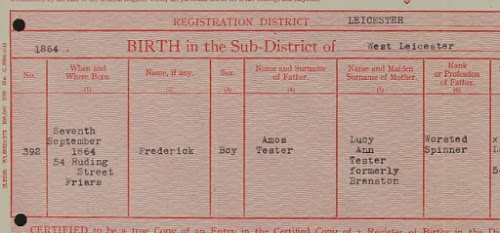
(from Tester’s MI5 file at Kew)
Tester always claimed that he was British-born as his father, Fred Tester was a British national who had been born 7 September 1864 in Leicester (MI5 reports have a copy of his birth registration). While that might be true, it should be noted, that according to a 5 December 1938 report to MI5, Tester’s birth was never registered with the British authorities in Stuttgart, which it should have been if he wished to claim British nationality. “The register of births of persons born at Stuttgart, Germany, have been searched from 1893 to 1897, inclusive, and there is no trace of a person named Arthur Albert Tester.” I have been unable to find online birth registrations for Stuttgart from the 1890s, so this will have to remain a bit of a mystery at this point, one that will crop up again.
Tester also claimed in newspaper interviews that his father was a former English Consul. This seems to have been a fabrication. On 8 December 1938, MI5 noted that “S.I.S. report on telephone today that Friedrich Tester was never British Consul in Stuttgart”. Whether Frederick/Friedrich Tester was perhaps an English Consul elsewhere is up for debate. In various Stuttgart directories, Frederick is simply listed as a businessman.
Frederick was born 7 September 1864 in Leicester to Amos Tester, a worsted spinner, and Lucy Ann Branston. How and when he came to be in Germany remains a mystery. In the 1881 English Census, Frederick was still living with his parents at his birth address (54 Rudling Street) in Leicester and gave his occupation as “Hosier – apprentice”.
We do know that on 26 September 1891, Frederick married Emma Luisa Paulina Käuffelin (born 28 Dec 1872) at the Lutheran Johanneskirche in Stuttgart. He gave his occupation as “Kaufmann” which translates as “businessman”. One report notes that Arthur came of “respectable South German parents”. While Tester’s father, Frederick, wasn’t technically German, Tester’s mother, Emma Käuffelin, was born 28 December 1872 in Vaihingen an der Enz, a small town northwest of Stuttgart. Her parents were Paul Emil Albert Käuffelin (a businessman in Heilbronn) and Claudine Amalie Pauline Luise Emma Kohler. Presumably they were a respectable South German family.
Siblings
Not much is known of Tester’s early life. He apparently had several siblings, but details are sketchy.
One report in the MI5 files said that he had a sister in Japan or China.
Another report noted that he might have a sister named Nelly (born 30 Jul 1893) in Stuttgart who was issued a British passport in 1930. This is likely Nelly Alice Lucy Ann Tester who appears in several genealogical sources related to “German persecutees” from 1939 to 1947. In one she is listed as living in Stuttgart at Neue Weinsteige 6B. A couple of passenger lists from 1923 and 1936 indicate that she was a secretary and that she was of British nationality. In 1955, she is listed on the probate records for Arthur Albert Tester. Nelly died in 1979 in North-East Hampshire.
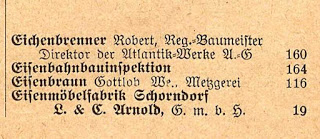
There is a bit more information about a sister named Emma who, according to several reports, married Robert Eichenbrenner, a German architect. Where and when they married is unknown but in the 1930s Eichenbrenner was supposedly working as an architect in Berlin and Emma was resident at Kurfürstendamm 72 in Berlin in 1936. This is confirmed by Berlin phone directories which note that Robert Eichenbrenner resided at that same address in 1935. He is listed as “Reg. Baumstr”, the abbreviation for ”Regierungsbaumeister”, another word for “architect”. I did find a document which states that Robert successfully passed the state exams in Baufach (architecture) in 1917 in Stuttgart. He was born in Biebrich am Rhein (south of Wiesbaden), on 25 May 1888 (the same village in which Tester’s first wife would be born). Robert served with the Reserve Field Artillery Regiment No. 26 as a Lieutenant, and was wounded in early 1916.
I wouldn’t normally devote so much space to such a minor character but… I found a 1925 directory for Schorndorf (east of Stuttgart) in which Robert Eichenbrenner was listed as “Reg.-Baumeister Direktor der Atlantik-Werke A.G.” This is one of the companies that Tester set up/took over/ran into the ground in the 1920s. More on that later. Clearly, Tester’s brother-in-law was involved with at least one of his business schemes.
Interestingly, I also found a 1930 Passenger List for Southampton which notes that one Robert Eichenbrenner, architect, residing at 4 Leinster Gardens, London, was travelling to Madeira. He was a German but planned to make England his permanent residence. Eichenbrenner was initially listed on a passenger manifest for British citizens but his name was stroked out and he was added to the passenger manifest for Aliens. On the British citizens manifest the next passenger travelling to Madeira was… banker Arthur Tester of 167 Victoria Street, London. So it would appear that their business relationship continued into the 1930s. In addition Robert Eichenbrenner would be listed in Tester’s probate notice in 1955. More on that later.
Finally, one MI5 report noted that another of Tester’s sisters was reportedly married to a member of the Gestapo but it is unclear if that would Emma, married to Eichenbrenner, or if there was another sister of whom we know nothing.
Education
As for his education, various reports noted that he had supposedly studied at Heidelberg, that he had studied with Goebbels and that he claimed to be a Doctor of Law of Germany and Switzerland and a Doctor of Philosophy of Belgium.
This is highly doubtful.
In one report to Special Branch in 1939, MI5 stated “His father was never a British Consul as alleged and there is no information to show that Tester took any degree which would entitle him to use the word “Doctor”.” Until such time as some university records show that Tester earned a legitimate doctoral degree, I am going to refrain to referring to Tester as doctor of anything.
First World War
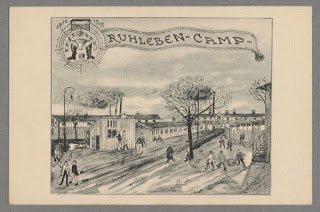
At the outbreak of the First World War in 1914, Tester would have been 19 years old, a prime age for cannon-fodder.
It does not, however, appear that he served in the German Armed Forces although there are several stories as to what happened to Tester during the First World War.
According to one story, Tester, as a British national, was interned at the Ruhleben internment camp at the outbreak of the war. This camp was located 10 km west of Berlin and was for civilian internees. This story seems a bit questionable given that Tester’s birth was never registered at a British consulate until the early 1920s.
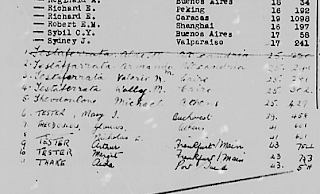
Tester’s name is third from the bottom (#9) and the reference leads back to the 1946-50 index.
I had a look at the British Consular Birth Indices (1849-1965) and there are two entries for Arthur Albert Tester, one from 1946-1950 which relates to the period 1921-1925. The entries were handwritten into the 1921-25 index while being printed normally in the 1946-50 index. Tester always made much of the fact that he was British-born but… as we shall see… he may have fudged that with some fancy footwork at the British Passport Office.
Tester himself claimed that he was condemned to death for espionage but was released by order of the Kaiser. I would suggest this be taken with pound, not a grain, of salt. Tester claimed many things over the course of his life, all designed to impress his audience, and most of them were false.
Another story has Tester working as an interpreter at the Ruhleben internment camp. This seems slightly more likely given that he spoke English quite well.
There are still other stories which indicate that he continued to work at as a singer at the Wiesbaden Theatre during the war.
Which story is true… or what combination of them… is anybody’s guess. One 1926 report noted that Tester “posed through the war as a good German but has posed as a good Englishman ever since”.
First Marriage
Before the end of the war, on 16 March 1918, Arthur married Bertha Balbina Lisbeth Ingeborg (née Alt) Stuber. Arthur’s occupation on the marriage registration was “Königliches Schauspieler”, Royal Actor. Other documents indicate that he was working as an actor and/or opera singer at the local Staatstheater in Wiesbaden, likely the Königlichen Theater Wiesbaden. Tester would have been 23 or 24 years old at this time.
His affiliation with the theatre isn’t really surprising since his mother was apparently a well-known singer. One 1908 document has her listed as a “Kammersängerin” literally, a Chamber singer. It was a German honorific for distinguished singers of opera and classical music. Another document from 1912-1913 lists her as a “Konzertsängerin” (Concert Singer). Finally, a 1922 passenger list (Germany to USA) has her listed as a “court singer”.
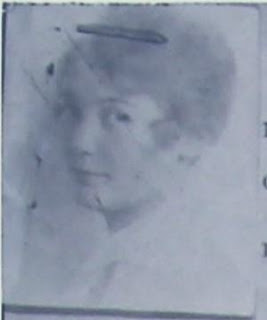
(from Tester’s MI5 files at Kew)
The fact that Tester was working as an actor/singer in his early 1920s does make one wonder how he would have managed to complete a university education. It is possible that he started university prior to the outbreak of war, but it seems unlikely, given his later history, that he completed any of his studies. His theatrical occupation in early 1918 does however, call into question the other story of him being interned in Ruhleben internment camp.
As for Ingeborg, his wife, she was born 26 December 1892 in Wiesbaden and was divorced from a gentleman named Stuber. A scant nine months after Ingeborg and Tester’s wedding, they welcomed their first child, Ingeborg Violet Tester, born 22 December 1918, possibly in Wiesbaden. While Tester and Ingeborg would have three other children in rapid succession, their marriage would not last beyond 1923/24. One report in the MI5 file notes that Tester was quite popular with the ladies and he kept a series of mistresses, one of whom would become his second wife. More on that later…
British Passport Application 1923
A year and a half after the happy nuptials, on 16 October 1919, Ingeborg applied for a British passport at the British consulate in Prague. Her application stated that she was the wife of Arthur Albert Tester who was himself a British national due to his father being British.
This is where things get rather interesting.
While the British Passport Office had Ingeborg’s passport application, they had no record of a passport application for Arthur Tester. And yet, when Tester applied for a British Passport in 1923 in Frankfurt, he presented his 1919 Prague-issued passport as proof of British nationality. Of which, again, the Passport Office had no record. The Consular Birth Indices noted above, would seem to suggest his birth was retroactively registered between 1921-1925, the period during which he applied for a British passport in Frankfurt.

Arthur Albert Tester’s birth registered in Frankfurt am Main in 1946.
In later years, Tester made much of the fact that he was British-born thanks to his father being British. But… in order to qualify for this honour, Tester would have had to be legitimate and his birth should have been registered with the British authorities, of which there was no record until 1946-50.
The absence of Tester’s 1919 Prague passport application could lead one to wonder if the passport he presented in Frankfurt in 1923, as proof of British Nationality, was a forgery. It wouldn’t be surprising…
1920s in Continental Europe
With the cessation of hostilities, and a British passport in his pocket (fraudulent or legitimate), Tester embarked on a truly dizzying array of ventures designed to take advantage of post-war chaos in Germany and, line his own pockets.

(from Tester’s MI5 file in Kew)
Suffice to say that BAOR (British Army of the Rhine) documents from that time note that Tester was a “notorious rogue, blackmailer and swindler”.
It has been a bit of a challenge to piece together his history but, as one report noted “It was a specialty of his to establish concerns [businesses] which he knew perfectly well could not live [survive].”
Directly after the war, Tester apparently managed to ingratiate himself with occupying French forces and was reportedly in close touch with Pineau, the chief of police. He was reported to be an interpreter for the I.A.R.H.C. (Inter-Allied Rhineland High Commission) and some said he was working for the French secret service. Whether he had that much influence with the French is questionable. The key thing is, Tester somehow managed to convince people that he had influence, and used that to his advantage, some personal and some financial. One report went so far as to say that Tester would blackmail his shady associates who believed that he had influence with the French.
Tester seems to have started out with some small blackmails. One report noted that he used his position of favouritism to bully the theatre management and staff and even threatened to have the theatre closed, with the assistance of his French friends, if his wishes were not complied with. Perhaps he wanted the lead role in a famous opera…
Another of his fraudulent ventures involved the Casino Betriebsgesellschaft. I have, unfortunately, been able to find nothing further about what this might have involved. Around the same time, he and Ingeborg had another child, Margit Tester, born 18 March 1921 in Wiesbaden. Shortly after her birth, the French got wind of Tester’s questionable activities and dropped him as an agent/contact/confidant. Tester then left Wiesbaden with his growing family and became partner in a wharf at Niederwalluf (southwest of Wiesbaden along the Rhine), which subsequently failed. After the Niederwalluf affair, Tester moved a few kilometres west to Eltville where he set up a bank.
It was in Eltville that Ingeborg gave birth to two more children, Mary Irmgard Tester (born 21 or 24 October 1922) and Frederick/Fred Tester (born 17 February 1924). MI5 reports note that Ingeborg deserted Tester in 1923, likely while she was pregnant with Fred.
The years 1922 and 1923 seems to have been a particularly busy time for Tester. During this period of hyperinflation Tester apparently managed to make some large profits by setting up a series of banks and businesses.
In Schorndorf (east of Stuttgart and quite a distance from Eltville), Tester established the “Atlantikwerke für Möbelkunst” with himself as chairman. His brother-in-law, Robert Eichenbrenner was appointed Director. According to one site, “In 1922 the company [Atlantikwerke] took over Grossmann & Pfander, founded in 1897, and moved its headquarters from Wiesbaden to Schorndorf in Württemberg. All kinds of home furnishings and wooden goods were produced, which were sold under the Atlantic brand. In November 1925 the company ran into payment difficulties and therefore had to file for bankruptcy on January 7, 1926.” Another one of Tester’s failed businesses.
In 1923, Tester was also involved in establishing “Frischkonzern” which bought up dozens of hotels and/or motor cars (perhaps as a hedge against hyper-inflation). There isn’t much info on this affair, but it apparently also failed.
In Wiesbaden, in 1923, Tester set up the Verwaltungsbank A/G as well as the Wuerttembuergische Industrie & Landwirtschaftsbank and… the Heilbronner Privatbank in Heilbronn. A truly mind boggling array of financial ventures…
On 29 August 1923, Tester was issued with British passport #359 in Frankfurt am Main. On his passport application, he described himself as a banker and used his British Passport #90 issued at Prague on 22 Sept 1919 as proof of British Nationality. In early January 1939, the British Vice-Consulate in Prague had this to say: “The British Vice-Consul at Prague presents his compliments to the Chief Passport Officer and has the honour to state that although a careful search has been made in the passport archives of this office the original application form of Arthur Tester cannot be found. An application form made out by his wife, Mrs. Ingeborg Tester, has been found which could be forwarded if it is considered that the particulars contained therein would be of interest.”
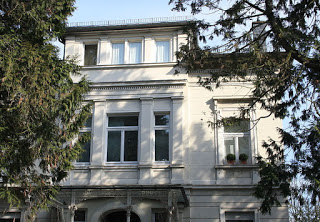
By the end of 1923, Tester was back in Wiesbaden and joined a financial group which sought to acquire the Nassauer Hof (a luxury hotel in Wiesbaden). He apparently acted as an agent between the parties (the Goetz family and the Stinnes Group) and earned 500,000 Francs for his services.
With the proceeds, Tester bought himself a villa at Sonnenbergerstrasse 33 in Wiesbaden which he equipped sumptuously. He naturally appointed a new mistress to the villa and this may have been the final straw for his long-suffering wife, Ingeborg.
When the dust of 1923 settled, Tester found himself living in Wiesbaden, saddled with his three eldest children (Violet, Margit and Marty), while pregnant Ingeborg stayed in Eltville. She gave birth to Fred on 17 February 1924 and moved to Hamburg. Later in life, Tester claimed to have no contact with his first wife or his eldest son.
In 1924, Tester apparently transferred his activities to Berlin where his “associates consisted, in the main, of men who have long since been in prison.” He lived in the best rooms at the Hotel Adlon, accompanied by two chauffeurs, two valets and several secretaries. All of this created “flash” for him and acted as a lure for unsuspecting marks. One German newspaper noted in 1926 that Tester “is extraordinarily plausible and has made it an art to confuse his victims and render them pliant to his ends”. He was likely living off the proceeds of the Nassauer Hof sale and lived quite lavishly in Berlin, Hamburg and Cologne.
He also managed to get into an accident at Hoechst (a district of Frankfurt am Main) when he and his car were run over by a train. He received generous compensation (70,000 Marks) but would bear scars on his feet and hands for the rest of his life.
We next pick up Tester’s trail in 1925-1926 when he offered himself for employment to the British in Cologne. While there is no evidence that the British accepted his offer, he managed to portray himself to his associates as being cozy with the British and claimed to be their “fully-empowered representative”. One report noted that Tester was a “sham agent” for the British forces. Another report, from the BAOR, noted that it wasn’t “impossible that [Tester] would procure an officer’s uniform and pay a visit to the [General Officer Commanding], B.A.O.R.” Naturally, Tester’s British passport helped him in his schemes. Tester approached a number of companies who were interested in providing material to the British forces and who would, in return, pay Tester a healthy commission. Tester was going to get delivery guarantees totalling 2.5 million marks but somebody got suspicious and Tester only came away with 100,000 Marks. Tester took the money and ran off to Paris and/or Brussels, one step ahead of the German authorities who, not surprisingly thought he might be dabbling in espionage for the British.
Like a cat, however, Tester always seemed to land on his feet or stay one step ahead of retribution. One 1926 Frankfurt newspaper (Frankfurter Nachrichten 16 January 1926) noted that: “It is almost incredible, in view of his past, that a number of firms in Frankfurt and its surroundings should have paid him advances on commission amounting to some 100,000 Marks. A single enquiry of the Chamber of Commerce or the police at Wiesbaden would have settled him once for all.”
Another Frankfurt newspaper (Frankfurther Zeitung 14 January 1926) noted that “It may now well be asked why this man has not been arrested long before. The reply is simple. His swindles all bore such a complexion of strict respectability that he was unapproachable from a criminal point of view. Most of his victims refrained from denouncing him.”
By this point, Tester was living with one of his mistresses, Charlotte Elise Uckert, a dancer who had been born in Berlin on 14 November 1903 (or 1905 or 1906 – the dates change from report to report). Charlotte and Tester had an illegitimate son, Arthur Uckert, born 20 September 1925 in Wiesbaden. Tester would eventually marry Charlotte in London (1929) after his divorce from Ingeborg was finalized. But as with Tester himself, Charlotte is a bit of an enigma. I could find no birth registration for Charlotte Elise Uckert born in Berlin anywhere around that time. I found a Romanian newspaper site which suggested that her name was “uckert Charlotte Seifert”. I had a look for Charlotte Elisabeth Seifert and there was an illegitimate girl born 13 November 1905 in Berlin. My excitement was short-lived when I learned she had died at the age of 3 months on 10 Dec 1905 in Berlin. It is always possible that Charlotte’s birth registration has been indexed incorrectly. But, in the meantime, her origins remain a bit of a mystery.
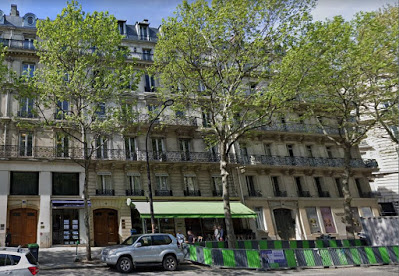
By May 1926, Tester was in France, working out of an office at the 13 Boulevard Malesherbes. Some thought he was working for the French secret service although the French apparently thought he might be working for the English and/or the Germans.
In April of 1926, Tester and Ingeborg began divorce proceedings which were finally granted on 13 May 1929. In the meantime, Tester apparently passed Charlotte off as his governess.
He didn’t stay long in France however. On 9 September 1926, Tester was arrested in Paris, possibly for floating a bogus share company. The British Occupation Authorities dearly wanted to get their hands on him and initially the French were going to extradite Tester to Germany. Tester must have had a savvy lawyer for within a few days he was released on 5000 Marks bail and told to leave France within eight days. The deportation was apparently delayed due to Tester’s ill health but even the French eventually lost their patience with him. On 6 November 1926, Tester was expelled from France by order of the Deuxieme Bureau for acting as a spy against France and England.
Tester then traveled to Antwerp, Belgium, where he and Charlotte checked into the Queen’s Hotel. In order not to complicate the divorce proceedings (by being caught with his mistress?), Tester checked in under a false name, possibly Frederick Thompson. He was arrested by the Belgian police for making a false statement as to his identity and for tampering with a passport, convicted in April 1927, and sentenced to three months imprisonment. It’s not clear if he actually served that sentence but by 29 November 1927, Tester was staying at the Piccadilly Hotel (London).
The Antwerp Police were already requesting information from the British about Tester and the Brits reach out to the Deuxieme Bureau who said Tester wasn’t a spy but definitely a crook. The British were less than thrilled to have such a dubious character on their shores, although he appears to have travelled back and forth to the Continent quite a bit. In August 1928, Tester had offices at Basildon House, Moorgate and was engaged in banking as Arthur Tester Ltd. By March 1929, he had changed the name of his company to Lanatbank Corp Ltd.
On 18 May 1929, five days after his divorced from Ingeborg was finalized, Tester and Charlotte were married in London. That very same day, Charlotte applied for a British passport which, as the spouse of a British citizen, she was entitled to do. Whatever Tester was up to, he apparently managed to allay the suspicions of the British authorities who said he was likely not a spy but would do anything for easy money. Several MI5 reports noted that Tester’s activities were a case for the Metropolitan Police and not the Security Service.
In the first three months of 1930, Tester made two trips to Madeira, one with his wife, departing Southampton on 17 January and the second with his brother-in-law, Robert Eichenbrenner on 28 March 1930. These trips become all the more perplexing when one learns that in 1930 a receiving order was issued against Tester (bankruptcy, I believe). And… in 1931, his Lanatbank failed. Clearly Tester was following a similar pattern in England to his Continental activities and the British authorities noted that he was associated with known swindlers, both in England and on the Continent.
Conclusion
This has been a rather rapid romp through the first thirty-five years of Arthur Albert Tester’s life. I hope that it has given readers a sense of the man. He was definitely an opportunist and a schemer of the highest order. The next instalment will look at his financial ventures in England from 1930 to 1938.
